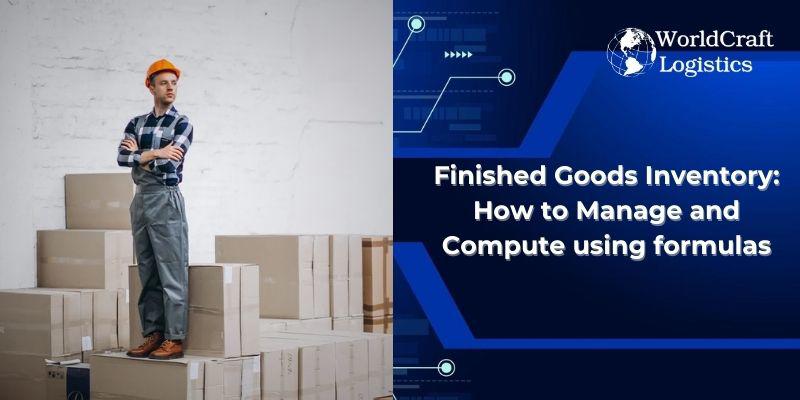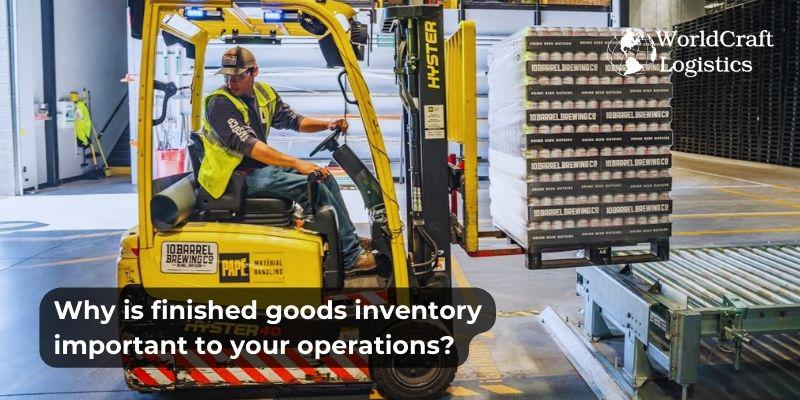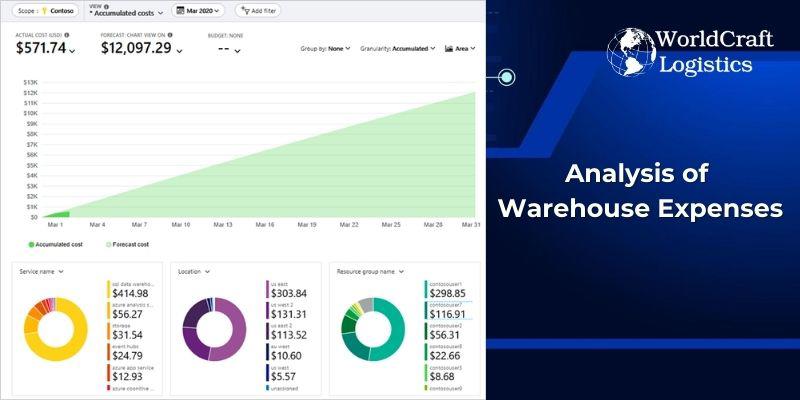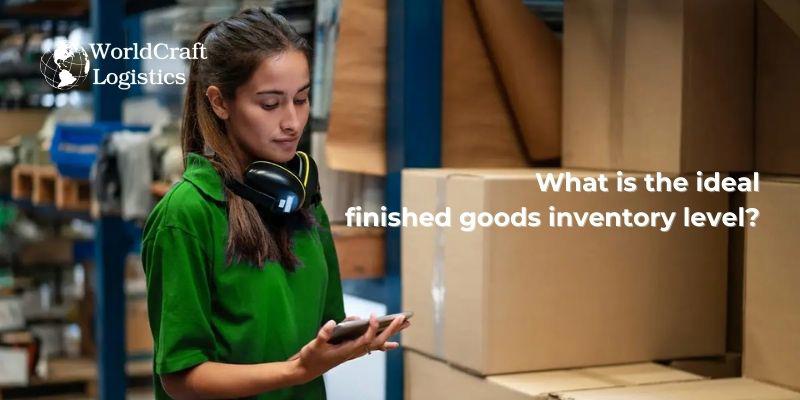
Starting June 1st, 2023 Our warehouse fee will be $0.65/cubic foot per month
In effort to lower the warehouse storage fee during inflation, we have went narrow aisle racking.This construction took us four months but the project is finally completed. With narrow aisle racking, we are able to drop storage by 24%.We as partners will go through this inflation together.
04/25/2024

"Finished goods inventory" emerging as a significant concept into the eCommerce realm. Manufacturers spend a lot of time in their warehouses dealing with finished goods, and they utilize a variety of metrics to keep a close eye on these products.
What you have for storage and possible sales is the focus of this kind of inventory. Comprehending it is essential for generating income, guaranteeing client happiness via prompt order fulfillment, and promoting company growth. For a business to succeed, accurate inventory records are essential, especially for finished goods. Fortunately, it's not too difficult to understand the underlying formula, which allows you to have a more sophisticated view of the equilibrium of your organization and the priceless insights this data provides.
Worldcraft Logistics are dedicated to helping you navigate the complexities of this and other inventory issues, from a warehouse management and balance sheet viewpoint, whether you are unfamiliar with the notion or it has just shown up in your new WMS and prompted a quick Google search box.

Finished goods inventory definition encompasses the stock readily available for purchase by customers, whether it's housed in a manufacturer's facility or an eCommerce company's virtual shelves. It signifies what's accessible for immediate order fulfillment and sale. Proper inventory management dictates that your records should prominently feature finished goods inventory, along with other essential components required for the manufacturing process, ensuring readiness and efficiency.
Originating from the manufacturing sphere, the term "finished goods inventory" delineates the third phase of inventory:
All materials used in the manufacturing of a product are considered raw materials, and they are inventoried before production orders are issued.
Work-in-progress inventory is made up of unfinished goods that are presently being manufactured in order to fulfill post-production orders. In the context of eCommerce, this category now includes products that are only utilized in kits; they cannot be sold separately but must be a part of SKUs or combined units.
Finalized products displaying goods that are prepared for purchase, similar to the stock that is displayed under product listings on your website.
Furthermore, finished products inventory, which denotes the change from bought goods to assets, is unique in accounting procedures. Although they are usually categorized as short-term assets, they are quite important for financial reporting and assessments.

Your inventory of finished items is an important indicator of the stock you have on hand that is ready for sale, and it affects both manufacturers and online retailers in different ways. Let's examine the following four crucial domains where it is present:
Your inventory levels directly correlate with revenue generation, necessitating meticulous tracking to ensure seamless order fulfillment.
Monitoring inventory levels in real-time enables proactive sales monitoring and ensures sufficient lead time for manufacturing replacement stock, mitigating the risk of stockouts. Establishing goods thresholds aids in preempting delays and guides raw material procurement to avert production bottlenecks.
Tracking the duration goods remain in inventory post-production sheds light on warehouse expenses vis-à-vis product turnover. This encompasses factors like required shelf space, direct labor for fulfillment, and overall storage costs, especially pertinent when collaborating with third-party logistics (3PL) providers like Worldcraft Logistics, where finished goods may influence monthly expenses.

Effective tracking of costs associated with finished goods enables comprehensive comparison against sales figures, facilitating insights into gross profit margins across various metrics. This invaluable data informs strategic decisions related to pricing, sales strategies, marketing initiatives, and more. Leveraging real-time inventory tracking offered by 3PL providers aids in conducting nuanced analyses.
Businesses can improve their supply chain and inventory management procedures by focusing on precise finished goods inventory tracking. This optimization involves avoiding the hazards of understocking or overstocking by modifying production and procurement levels to correspond with variations in demand.
Careful tracking of finished goods helps manufacturers and eCommerce companies that handle kits or subscription-based offerings avoid waste material accumulation and excessive raw material storage or work-in-progress inventory.
It's simple to compute your finished goods inventory, and it may provide you with a wealth of information about the dynamics of your warehouse and production over a certain time frame. It's possible that the software you currently use makes tracking components like direct labor and calculating the produced cost of goods easier.
Nonetheless, it is important to guarantee consistency in the duration for the expenses included in the following formula. Different end dates can make the calculation much more difficult to solve and confuse summing.
The simplest method for figuring out completed goods inventory is as follows:
Finished Goods Inventory Formula = (COGM – COGS) + Value of Previous Year’s Finished Goods
You must first determine your cost of goods sold (COGS) and cost of goods manufactured (COGM) before using this calculation. Here's how to figure out both numbers:
COGM = (Beginning WIP Inventory + Total Manufacturing Cost) – Ending WIP Inventory
COGS = (Beginning Inventory + Purchases During the Period) − Ending Inventory
This equation provides a snapshot of your inventory's current value and proves instrumental for your balance sheets. Depending on your business setup, setting alerts based on this equation can help prevent restocking delays.
Regular review of this formula enables you to assess goods' profitability, identify potential waste, and optimize overall inventory management and expenditure.
Note: The accounting period should be the same for all of these formulas.
Let's quickly go over a step-by-step example of how to use each of the three formulas to compute finished goods inventory.
Let's say you want to figure out your completed goods inventory since your firm produces and sells candles.
Step #1: Selecting a time range for your computations should be your initial move. For example, you decide you would want to know how much amout of finished goods inventory you have at the end of the previous quarter.
Step #2: The next step is to collect all the data required to apply the three formulas. In our example, we'll assume that you go over the records of your company and discover that:
Step #3: Next, enter the relevant data into the COGM formulae as follows:
COGM = (Beginning WIP Inventory + Total Manufacturing Cost) – Ending WIP Inventory
COGM = ($750 + $425) – $175
COGM = $1,175 – $175
COGM = $1,000
Do the same to calculate COGS:
COGS = (Beginning Inventory + Purchases During the Period) − Ending Inventory
COGS = ($250 + $550) – $200
COGS = $800 – $200
COGS = $600
Step #4: Calculate finished goods inventory.
Lastly, enter the value of the completed items from the previous time period along with the COGM and COGS figures into the finished goods inventory calculation as follows:
Finished Goods Inventory Formula = (COGM – COGS) + Value of Previous Year’s Finished Goods
Finished Goods Inventory Formula = ($1,000 – $600) + $100
Finished Goods Inventory Formula = $400 + $100
Finished Goods Inventory Formula = $500
In our example, your company’s finished goods inventory for the last quarter would be $500.

Continuously updating and tracking this information is indeed a promising initiative. Understanding your finished goods inventory analysis aids in comprehending warehousing storage costs and estimating other pertinent considerations. It quantifies revenue potential more concretely and serves as a benchmark for assessing expenses like salaries, insurance, space utilization, and even depreciation. Moreover, as inventory volumes rise and items linger on shelves, the risks associated with loss and theft become more pronounced.
Although some companies have become cautious about reverting to just-in-time supply chain practices amidst the backdrop of COVID-19, calculating finished goods offers clarity into sales trends and inventory movement dynamics.
Furthermore, it's essential to recognize that your sales potential may exceed the availability of finished goods. In such cases, clear backorder channels are crucial for managing customer expectations. To support this, robust software capable of tracking inventory across all production and fulfillment locations is indispensable, or alternatively, partnering with a knowledgeable entity capable of managing this aspect for you is invaluable.

When it comes to inventory management, there is no one-size-fits-all approach, particularly given the ever-changing nature of the eCommerce industry. Variations exist in inventory requirements among different product categories, even among the same client base.
Finding an inventory count balance that allows you to fulfill orders quickly without going over budget for direct labor and storage is what you should strive for. There is no doubt that seasonal changes and other influencing variables will cause this balance to change.
Monitoring stock levels can be difficult, for sure. Worldcraft Logistics is here to help if you find yourself in need of guidance. Our area of expertise is helping eCommerce businesses of all sizes find the best fulfillment options. Follow us on social media for insightful suggestions, or reach out via the Contact form at the top of the page for a personalized conversation. Whether you require a 3PL partner tailored to your product niche, scale, volume, or other specific needs, we're dedicated to providing the assistance you need.
SEO
Digital Marketing/SEO Specialist
Simon Mang is an SEO and Digital Marketing expert at Wordcraft Logistics. With many years of experience in the field of digital marketing, he has shaped and built strategies to effectively promote Wordcraft Logistics' online presence. With a deep understanding of the logistics industry, I have shared more than 500 specialized articles on many different topics.

Education
01/05/2025

Education
02/18/2025

Education
01/01/2024

Education
08/28/2024

Education
11/13/2023